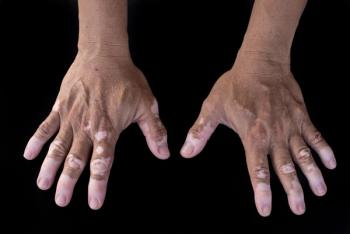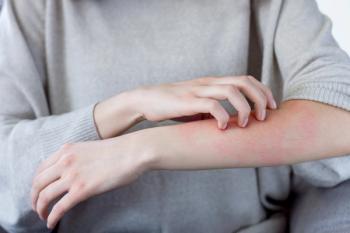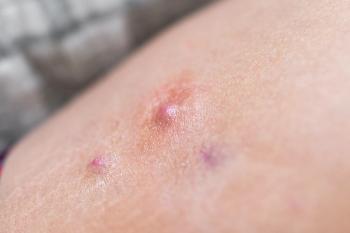
Tapinarof Cream Improves Symptoms and Quality of Life in Children with Severe Atopic Dermatitis
Tapinarof, however, offers a potential solution by improving the skin barrier, reducing inflammation and relieving itch without the limitations of traditional treatments.
Tapinarof (Vtama) topical cream, an aryl hydrocarbon receptor (AhR) agonist in development for atopic dermatitis (AD), significantly improved symptoms and quality of life, including sleep, for patients starting at the age of 2 with moderate to severe AD, according to a study recently published in
AD is a chronic skin condition that causes inflammation, itching and dryness, as well as significantly impacting a person’s quality of life.
AD disrupts sleep, negatively affects school performance and contributes to anxiety, depression and low self-esteem in young children and adults.
These issues also affect families, who experience emotional and financial burdens, such as parental sleep deprivation and medical expenses.
Current treatments, such as topical corticosteroids (TCSs), have side effects that limit their long-term use, especially in children.
Tapinarof, however, offers a potential solution by improving the skin barrier, reducing inflammation and relieving itch without the limitations of traditional treatments.
To examine its effects, the ADORING 1 and 2 phase 3 trials, included 813 patients with moderate to severe AD who were randomly assigned to receive either tapinarof cream 1% or a placebo once daily for 8 weeks.
Patient-reported outcomes (PROs) were measured using the DLQI, CDLQI, IDQOL, DFI and POEM.
The trials were double-blind, randomized and vehicle-controlled. After 8 weeks, eligible patients could participate in an open-label extension for an additional 48 weeks.
At the start of the study, patients had moderate to severe AD symptoms and reported significant impacts on their quality of life and family life.
Tapinarof showed significant improvements in quality of life compared to the placebo at week 8.
In ADORING 1, the DLQI score improved by −6.2 for tapinarof, compared to −3.5 for the placebo (P=0.0031).
A similar trend was seen in ADORING 2 (−5.5 vs −3.5; P=0.0028). Family impact, as measured by the DFI, also improved more with tapinarof (−5.6 vs −2.9; P<0.0001 in ADORING 1).
Patients 12 and older reported significant improvements in sleep and symptoms, with POEM scores decreasing by −9.4 and −10.6 (P<0.0001) in both trials.
Overall, tapinarof showed strong potential for improving outcomes for both patients and their families.
Strengths of the study include a large, diverse patient population and rapid, clinical improvements in AD symptoms, sleep and quality of life, starting as early as week one. The safety profile was consistent with previous trials.
However, the study’s limitations include the lack of long-term efficacy data and the fact that most participants had moderate AD (baseline vIGA-AD score of 3), which may limit how applicable the findings are to patients with more severe or milder forms of AD.
Although there are limitations, the results suggest that tapinarof cream could be a promising treatment for managing AD.
Newsletter
Get the latest industry news, event updates, and more from Managed healthcare Executive.





















































